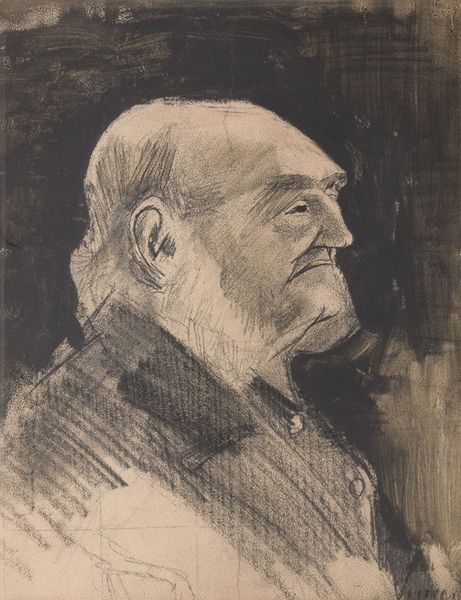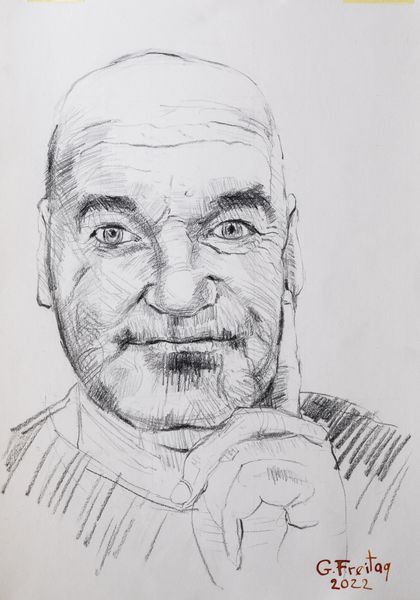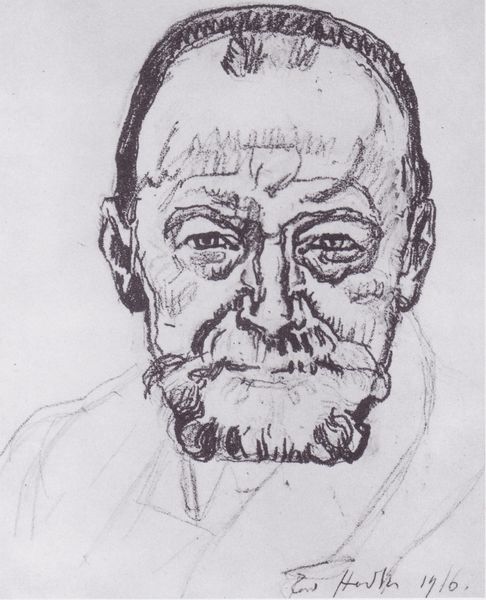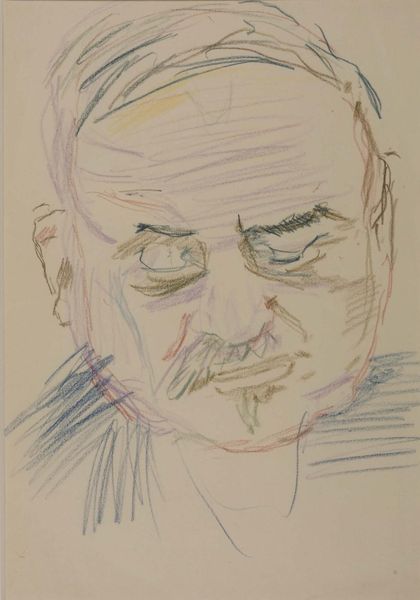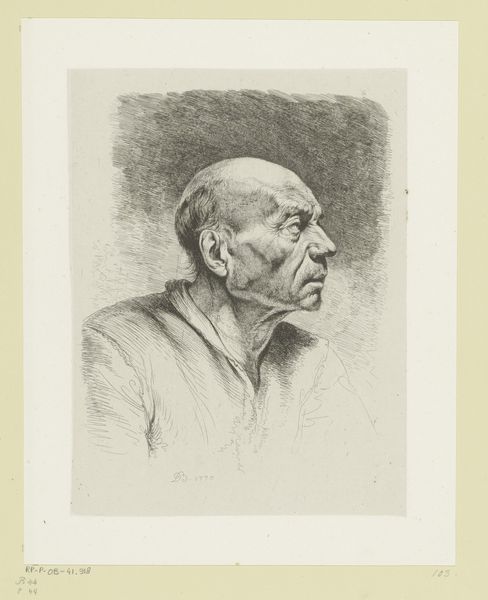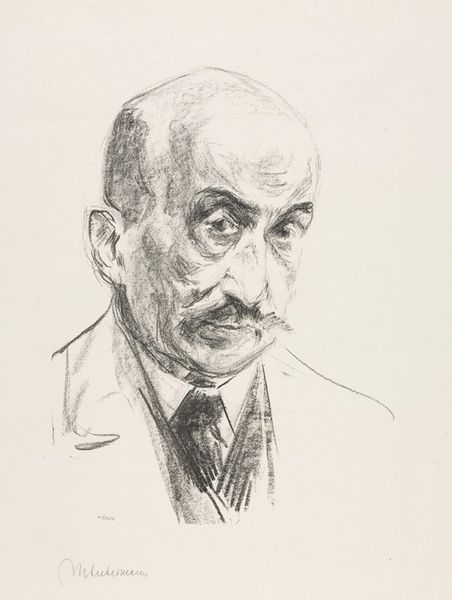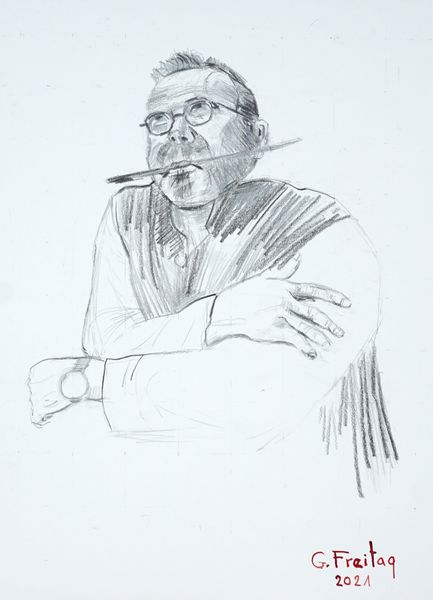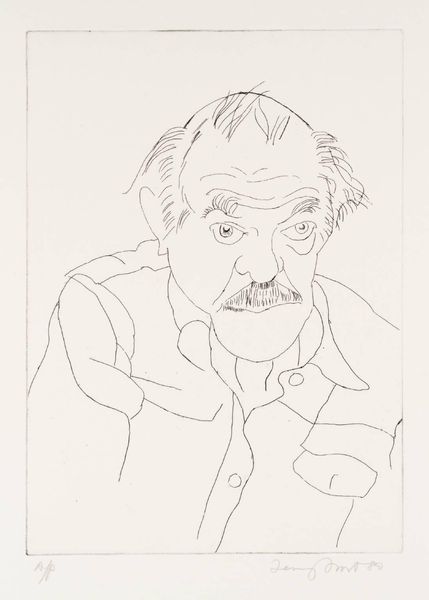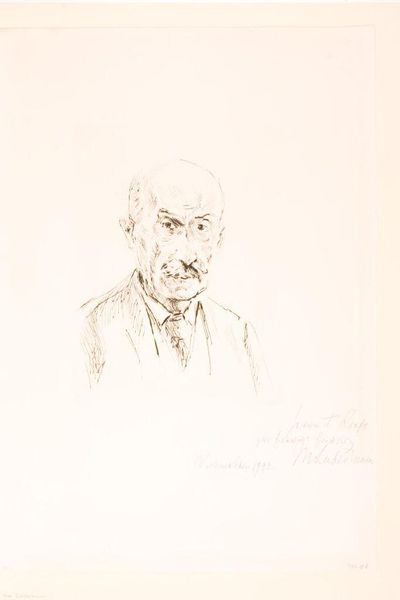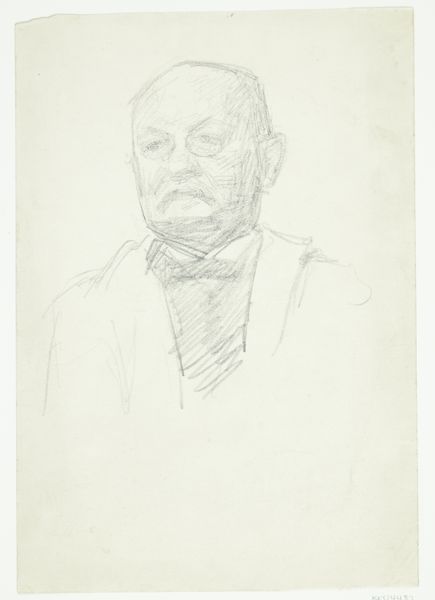
drawing, pencil, graphite
#
portrait
#
drawing
#
facial expression drawing
#
self-portrait
#
head
#
face
#
pencil sketch
#
famous-people
#
pencil drawing
#
sketch
#
pencil
#
graphite
#
nose
#
portrait drawing
#
history-painting
#
forehead
#
portrait art
#
realism
Dimensions: 59.4 x 42 cm
Copyright: Copyright: Gazmend Freitag
Curator: Gazmend Freitag created this pencil drawing, "Franz Joseph I.," in 2015. Editor: There's a captivating weightiness to this sketch. It's almost dreamlike. The rough strokes create a palpable, human presence, but like he is fading away. Curator: Yes, there’s an immediacy in Freitag's use of graphite, which lends itself to rapid execution and replication, something important when considering the genre of portraiture and its democratization throughout history. Editor: You know, that connects directly with how portraiture has always navigated power and the access we have to portray it or own it. What do you make of the medals adorning Franz Joseph I.’s chest in relation to the simple medium Freitag used? Curator: The use of a readily available material like pencil makes that likeness accessible and reproducible; in contrast, Franz Joseph's medals speak to the centralization of wealth and political power. Editor: It's as though Freitag’s challenging traditional representations of power and aristocracy by depicting such a well-known figure using simple means, laying bare the construction of this “great man”. Did the artist intend the image to be critical? I’m so curious! Curator: It is open to interpretation. Freitag’s process, rendering an iconic figure through humble materials, perhaps reflects on history's malleability. Graphite sketches are easily erasable, constantly mutable in ways that sculpted or painted imperial portraits would not be. Editor: Precisely. A visual reminder that power is fleeting. Well, I can't stop staring. The way the artist has rendered the mustache alone speaks volumes to the character and history imbued within this portrait. Curator: Freitag invites a critical reassessment, encouraging us to consider the complex relationship between artistic process, representation, and the historical narratives they convey. Editor: It leaves us pondering who holds the pencil, who controls the image, and therefore, perhaps, who shapes history? Food for thought.
Comments
No comments
Be the first to comment and join the conversation on the ultimate creative platform.
